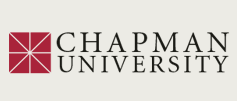Stigma Toward Individuals Engaged in Consensual Non-monogamy: Robust and Worthy of Additional Research
Document Type
Article
Publication Date
7-16-2013
Abstract
In our target article, “The Fewer the Merrier: Assessing Stigma Surrounding Consensual Nonmonogamous Relationships,” we documented a robust stigma toward consensual nonmonogamous relationships and a halo surrounding monogamous relationships. In the present piece, we respond to six commentaries of our target article with the aim of promoting future research and policy change. First, we address questions and concerns raised by commentators using existing data and found that regardless of perceived relationship happiness, sexual orientation, or gender (of experimental targets), individuals in consensual nonmonogamous relationships were more negatively viewed on a variety of qualities (both relationship‐specific and nonrelationship specific) compared to those in monogamous relationships. Second, we suggest productive future research avenues with regards to implications for social change, and strengthening methodology used in consensual nonmonogamous research. Finally, we consider common ground among the commentators as an avenue to promote coalition building through the examinations of prejudice toward individuals in nonnormative romantic relationships. We conclude that this is only the beginning of a fruitful line of research and argue that the stigma toward departures from monogamy is robust and, of course, worthy of additional research.
Recommended Citation
Moors, A. C., Matsick, J. L., Ziegler, A., Rubin, J. & Conley, T. D. (2013). Stigma toward individuals engaged in consensual non-monogamy: Robust and worthy of additional research. Analyses of Social Issues and Public Policy, 13(1), 52-69. doi: 10.1111/asap.12020
Copyright
Wiley

Comments
This article was originally published in Analyses of Social Issues and Public Policy, volume 13, issue 1, in 2013. DOI: 10.1111/asap.12020